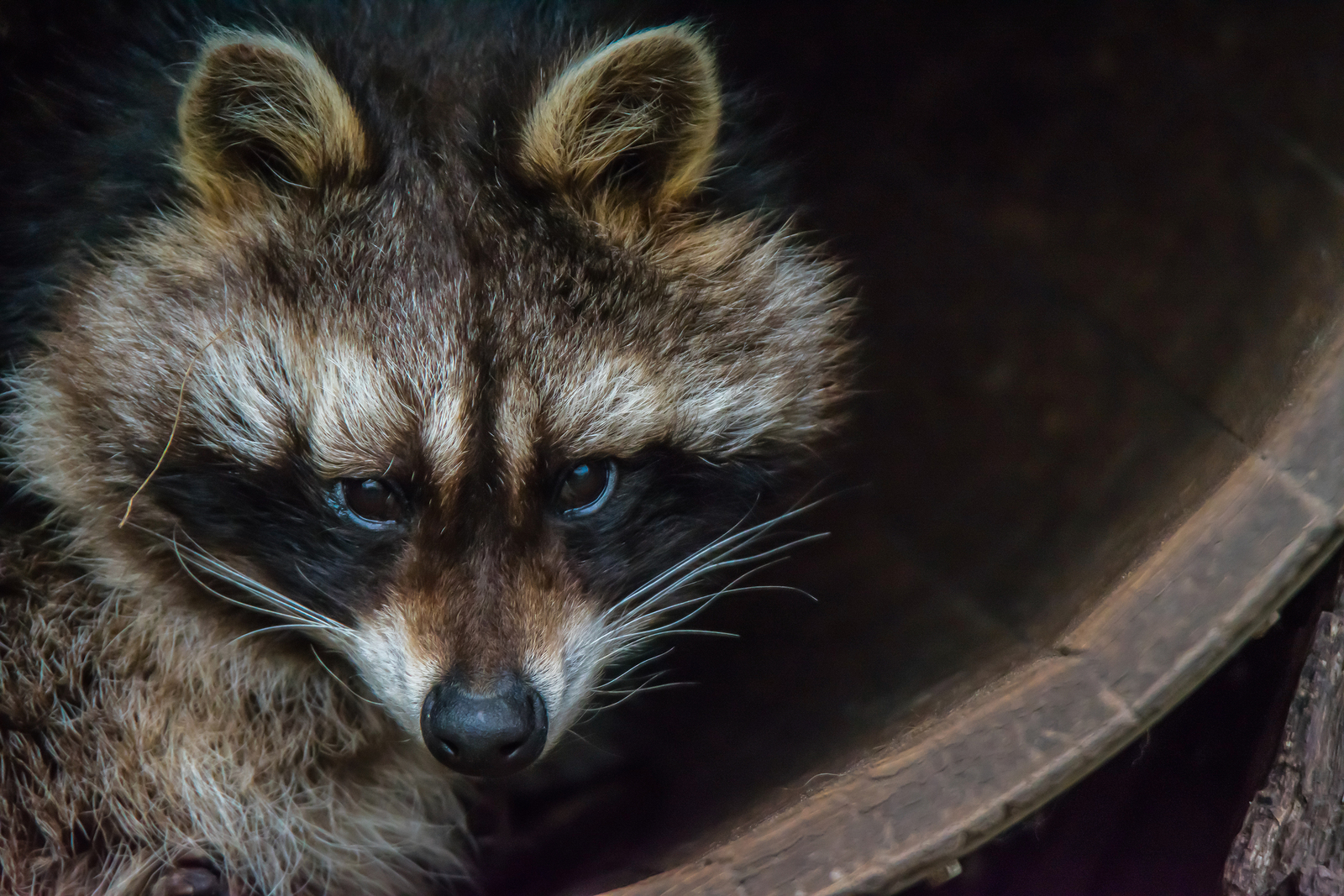| 1 | 2 | |
|---|---|---|
Program Contacts |
||
| Joe Lynch MPH, RS Program Manager 216.201.2000 ext 1241 jlynch@ccbh.net |
Barry Grisez RS Supervisor 216.201.2000 ext 1232 bgrisez@ccbh.net |
|

Since the emergence of raccoon strain rabies in Northeast Ohio in 2004, CCBH has been collaborating with the U.S. Department of Agriculture (USDA)-Division of Wildlife Services and the Ohio Department of Health to prevent further spread of the disease throughout the state.
In an effort to vaccinate the wild raccoon population, an Oral Rabies Vaccine (ORV) was distributed by CCBH in many of the communities on the eastern side of the county each year. In Cuyahoga County, the majority of the baits were distributed by hand, while aerial distribution is utilized in the Cuyahoga Valley National Park and many other more rural parts of the State. The distribution of ORV in Cuyahoga County was typically completed in 7-10 days.
Enhanced surveillance allows us to test target species for rabies to help in evaluating the success of the ORV program and to make determinations about where future efforts should be made. Animal Control Officers, trappers, police officers and the general public routinely provide specimens that include raccoons, skunks, foxes and coyotes. These animals were either observed as acting in a strange manner, exhibiting signs of illness, identified as nuisance animals or were found as recent road kills. These specimens are submitted to the USDA for rabies testing.
2023 Fall ORV Baiting Program Update
To protect Ohioans and their domestic animals, the Ohio Department of Health and other state and local agencies continue to partner with the United States Department of Agriculture (USDA), Animal Plant Health and Inspection Service, Wildlife Services to implement a program to immunize wild raccoons for rabies using an oral rabies vaccine.
This effort has been focused on creating a barrier of immune animals to help prevent the westward migration of raccoon-strain rabies in terrestrial wildlife. The vaccine-laden baits are dropped by fixed wing aircraft or a low-flying helicopter in rural areas or distributed by hand and from vehicles in urban neighborhoods. The baits contain a rabies vaccine, which if consumed by a raccoon or skunk, should vaccinate the animal against the rabies virus.
Beginning July 31, 2023, the United States Department of Agriculture (USDA) Animal and Plant Health Inspection Service (APHIS) Wildlife Services, in cooperation with the Ohio Department of Health (ODH) and several Ohio local health departments (LHDs), will begin distributing an oral rabies vaccine (ORV) by ground and aircraft to immunize wild raccoons in targeted cities and counties. Baiting will occur in Ashtabula, Belmont, Carroll, Columbiana, Geauga, Harrison, Jefferson, Lake, Mahoning, Monroe, Portage, and Trumbull counties as well as the cities of Ashtabula, Boardman, Conneaut, Geneva, Hubbard, Lisbon, Poland, Struthers, Youngstown, and Warren. Contingent on good weather, the operation should be completed by Aug. 25, 2023.
One rabies vaccine formulation, ONRAB® (Artemis Technologies), will be distributed:
• ONRAB® is a recombinant rabies vaccine, utilizing a live human adenovirus type 5 as the vaccine vector. The vaccine contains Polymyxin B sulphate (15 Units/ml) and Neomycin sulphate (15 Units/ml). The attractant coating contains ~100mg of Tetracycline hydrochloride (biomarker). The vaccine does not contain live rabies virus. The vaccine is contained in a polyvinyl chloride (PVC) blister pack, covered in a waxy green coating containing vegetable fats, wax, and a sugar vanilla attractant. This vaccine has been used successfully in Canada since 2006 and experimentally in the U.S. since 2011 with no reports of adverse incidents in humans. Ohio is one of seven states using ONRAB® for baiting operations in the U.S. Most people have acquired immunity to adenovirus type 5 in early childhood, but persons who are pregnant or immunocompromised may be susceptible to infection (cold-like infection) if the vaccine is introduced into a wound, eye or ingested. Exposure may result in fever, sore throat, headache, or conjunctivitis. Pets consuming numerous baits may experience vomiting or diarrhea that is self-limiting.
There is no exposure risk in handling an intact bait. As a precaution, it is recommended that people wash their hands thoroughly with soap and water after handling any rabies vaccine bait. Below are some additional recommendations for those who find ORV baits:
• Do not attempt to remove an ORV bait from an animal’s mouth, as you could be bitten. Ingesting the vaccine will not harm your pet. Vomiting from the plastic sachets and diarrhea from the coating of the vaccine have occurred in dogs that have ingested multiple baits.
• It’s best to leave baits alone unless found in your lawn, driveway, or other area where a child or pet might find it. If found in one of these locations, confine your pet and look for other baits in the area. The baits can be moved to another location that is less accessible to people or pets or can be placed in a Ziploc bag and thrown away.
• Wear gloves or use a paper towel when you pick up a bait. Although there is no harm in touching an undamaged bait, using these precautions will protect against an unknown exposure to the vaccine. Gloves or a paper towel will protect your hands if you have any small cuts.
• If the blister packet containing the vaccine breaks, the liquid vaccine should be visible. Wash your hands and any exposed skin thoroughly with soap and water.
• If you have had vaccine exposure to your skin, mucous membrane, or eyes, you should seek medical attention if you experience any rash, fever, sore throat, headache, conjunctivitis, vomiting, or diarrhea within 21 days of the exposure. If you or your pet came into contact with the
bait/vaccine, it is recommended that you contact ODH at 1-888-574-6656.
Once again, no ORV baiting of any kind will occur in Cuyahoga County this year. The last distribution of ORV baits in Cuyahoga County occurred back in 2014. The number of raccoon rabies variant infected animals in Ohio has stabilized over the last decade. The only rabies positive terrestrial animal identified this year has been one raccoon in Mahoning County.
Through the prior use of ORV, the effective trap-vaccinate-release (TVR) program, and other management strategies, the number of rabies cases in terrestrial animals in counties that do not border Pennsylvania has been reduced to zero.
Cuyahoga County continues to submit rabies specimens to USDA Wildlife Services for testing. The volume of specimens submitted, along with the lack of rabies positive animals in our vicinity, has allowed the USDA to pull the focus of ORV baiting efforts back toward the east. As a result, the previously baited eastern portion of Cuyahoga County is now outside the targeted ORV baiting zone.



